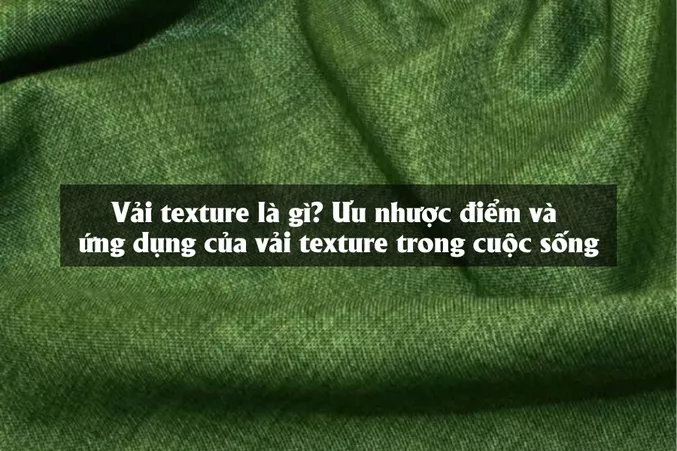Textured fabrics are gaining popularity in fashion and interior design due to their diverse and unique qualities. Learn about popular textures and maintenance tips here!
What is Texture Fabric?
Texture refers to the tactile qualities of a material, including its smoothness, softness, and overall feel. When we refer to textured fabrics, we are talking about fabrics that have a distinctive surface created by weaving high-quality yarns. These fabrics offer a superior feel and visual appeal in comparison to ordinary fabrics. As a result, textured fabrics are highly esteemed and often selected for products that aim to provide a sense of luxury and individuality.
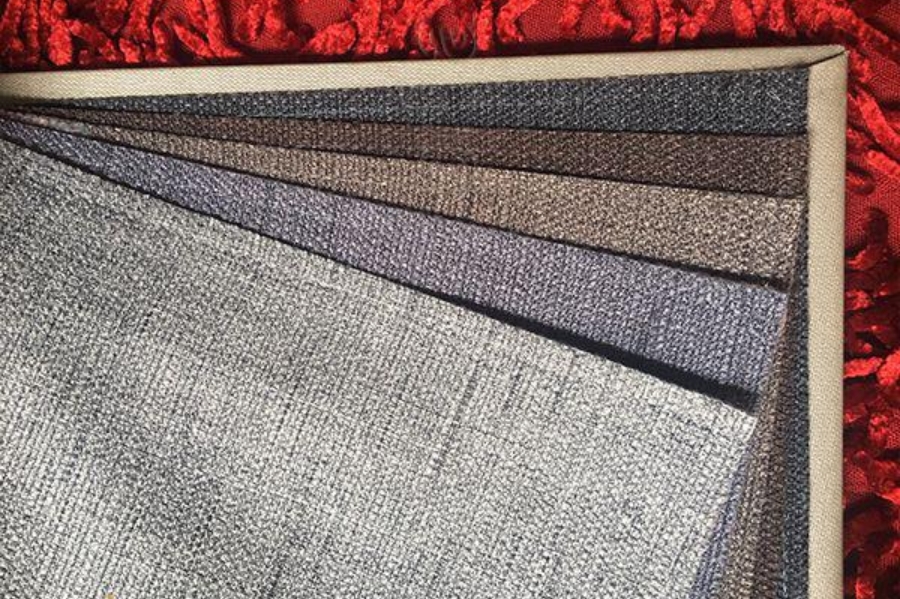
Texture fabric refers to a type of material that has a distinct tactile quality, characterized by its surface structure and feel. It encompasses a wide range of textiles that have been intentionally designed to create variations in texture, enhancing their visual appeal and overall aesthetic. The texture can be created through various techniques such as weaving, knitting, printing, or embroidery, resulting in fabrics that have differing patterns, raised or indented areas, or a combination of both. Texture fabric adds depth, dimension, and interest to clothing, home decor, and upholstery, allowing for a unique sensory experience when touching or interacting with these materials.
In today’s market, there is a wide variety of Texture fabrics available, including patterned, velvet, canvas, and silk options. Each type of Texture fabric possesses unique qualities and advantages, making them suitable for different purposes. For instance, silk and velvet fabrics are commonly utilized in the upscale fashion industry, adding a touch of luxury and elegance. On the other hand, canvas fabrics are highly durable with a sturdy texture, making them ideal for covering furniture such as sofas and cushions, enhancing the durability and convenience of living spaces.
Origin of Texture Fabric
Textured fabrics were created to meet the demand for textile products that had distinct patterns and textures, offering a fresh and appealing experience for the observer. These fabrics were initially developed by incorporating 2D and 3D textured patterns, such as roughness and folded details, to add a sense of allure and individuality to the products.
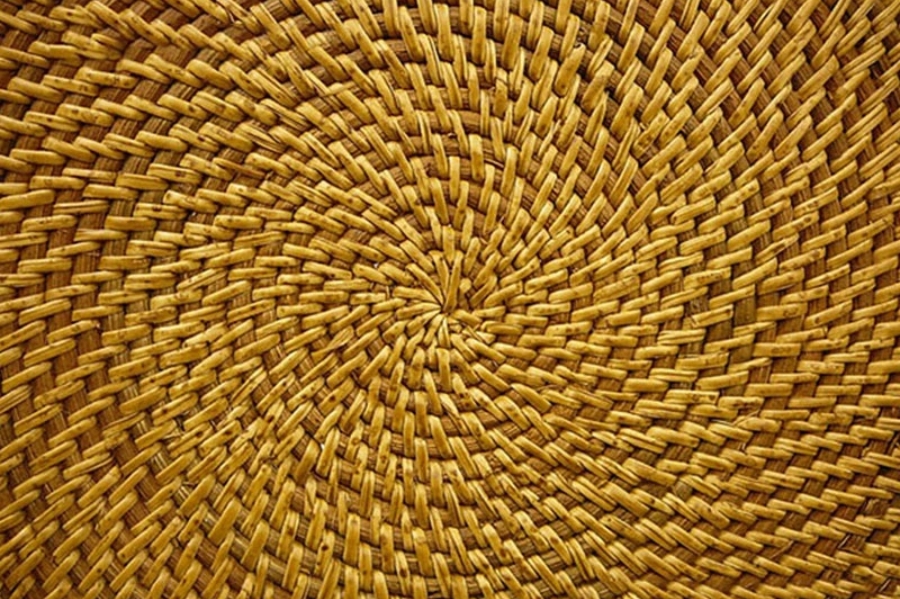
The origin of texture fabric can be traced back to ancient civilizations where people began experimenting with different weaving techniques to create textiles with unique patterns and textures. These early forms of textured fabrics were often made from natural materials such as flax, wool, silk, and cotton.
Over time, artisans and textile manufacturers developed various methods to manipulate the threads, yarns, and fibers during the weaving process to create different textures. Some of these techniques included adding extra threads to create raised patterns, using different thicknesses of yarn to create variations in texture, or even employing special weaving patterns to achieve specific designs.
As civilization progressed, the demand for textured fabrics grew, leading to the invention of more advanced weaving machinery. Industrial revolution in the late 18th and early 19th centuries, brought significant advancements in textile manufacturing. These innovations allowed for the creation of intricate and more intricate designs, making textured fabrics more accessible to the general population.
In modern times, texture fabric is manufactured using a combination of traditional and modern techniques. State-of-the-art machinery and computerized looms are employed to produce a wide range of textured fabrics that cater to diverse applications and preferences. These fabrics are used in fashion, interior design, upholstery, and many other industries, adding depth and visual interest to various products.
Overall, the origin of texture fabric can be traced back to the ingenuity and creativity of ancient civilizations, evolving throughout the centuries with technological advancements and innovations. Today, texture fabrics continue to play a crucial role in the textile industry, adding a tactile and visual appeal to a wide range of products.
Textured fabrics offer more than just patterns; they encompass a wide range of materials including white fabric, velvet, and canvas. With the advent of modern weaving technology, these materials can be transformed into various types of textured fabrics with different surfaces and tactile experiences, ranging from soft and smooth to sturdy and long-lasting. As a result, these textured fabrics have quickly become the preferred choice in the fashion and interior design industries, giving rise to the newest and most exceptional products on the market. Men’s fashion items made from textured fabrics include men’s t-shirts, polo shirts, and men’s trousers, among others.
Fabric Texture Classification
Visual Texture Fabric
This fabric possesses a distinctive feature of captivating patterns that exhibit a vibrant array of colors with a style reminiscent of 2D texture images. It effectively generates a Visual Texture that deceives the viewer’s perception, evoking a sense of tangibility and sharpness. It is frequently employed in the realms of fashion and decoration to provide accents and allure, drawing attention to the products.
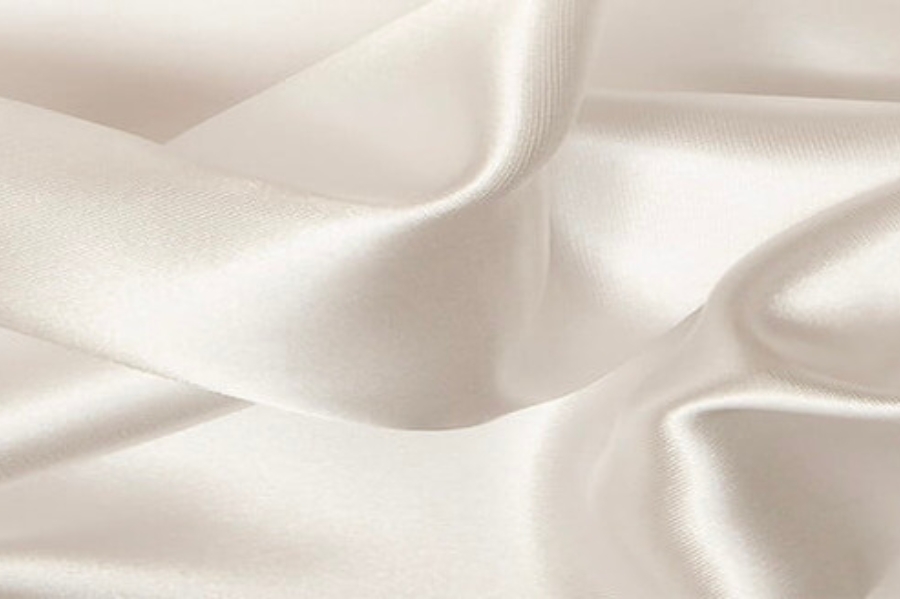
Visual Texture
Tactile Texture Fabric
Tactile texture refers to the sense of touch, and is defined by its rough and three-dimensional texture. These designs are not only visually realistic, but also provide a tangible experience through their vivid and sharp visual effects. Tactile texture fabrics are specifically printed with three-dimensional patterns, resulting in a product that exhibits a greater depth and realism. This makes them perfect for applications that demand a unique visual and tactile experience.

Tactile Texture
Pros and cons of textured fabric.
Advantage
Texture fabric offers numerous remarkable benefits that greatly satisfy users.
- Superior aesthetics: The patterns and effects printed on the fabric surface are extremely impressive, easily attracting attention at first sight.
- Variety of species: With a variety of colors and patterns, Texture fabric offers many options to suit the preferences and needs of users.
- Excellent durability: Made from high-quality materials and meticulous weaving techniques, Texture fabric is highly durable and retains its quality over time.
- Ventilation: Special weaving technique helps the fabric to be airy and breathable, giving a comfortable feeling without causing stuffiness.
- Effective dust protectionTexture fabric has antibacterial and dust-proof properties, ensuring safety and cleanliness for users.
- Easy to clean: Cleaning Texture fabric does not take much effort, helping users save time and care.
- Diverse applicationsTextured fabrics are not only used in clothing but also popular in interior design, decoration and many other fields.
- Rich productsFrom patterns to materials, Texture fabrics create diverse and stylish products that meet the aesthetic and functional needs of users.

Texture fabric offers a range of advantages and disadvantages that are worth considering. On the positive side, texture fabric is known for its unique tactile appeal. The various textures, such as ribbing, embroidery, or woven patterns, create a visually interesting and dimensional surface that adds depth to any design. This can make texture fabric an appealing choice for those looking to create a visually stimulating and luxurious aesthetic.
Additionally, texture fabric can provide a certain level of practicality. The textured surface helps to hide stains, wrinkles, and signs of wear and tear, making it a durable and low-maintenance option for upholstery or clothing items. It also tends to offer good insulation properties, making it suitable for use in colder climates or for achieving a cozy atmosphere in interior design.
However, there are also some downsides to using texture fabric. One of the most significant drawbacks is that the textured surface can accumulate dust and dirt more easily than smooth fabrics. This means that regular cleaning and maintenance are necessary to keep the fabric looking its best. Additionally, some texture fabrics may not be as comfortable to touch as their smoother counterparts, as the textures can sometimes feel rough or scratchy against the skin.
Another factor to consider is that texture fabric may be more expensive than plain or smooth fabrics due to the extra manufacturing processes involved in creating the desired textures. This cost can be a disadvantage for those on a budget or looking for a more affordable option.
In summary, texture fabric offers unique visual appeal and practical benefits, including hiding stains and offering good insulation. However, it requires regular cleaning and maintenance and may feel less comfortable compared to smoother fabrics. It is also important to consider the potentially higher cost associated with texture fabric.
Defect
- Velvet Texture Fabric: With its heavy weight, velvet can be inconvenient to use as everyday clothing. The thickness of this material also makes the user feel uncomfortable in daily activities.
- Canvas Texture Fabric: Canvas has the ability to retain water, leading to a shorter lifespan. In addition, with its considerable thickness, canvas often takes longer to dry than other fabrics, making it difficult to wash and preserve.
The uses of textured fabric are diverse and range from clothing and home decor to automotive and industrial applications.
Textured fabrics have become increasingly popular in various aspects of modern life due to their appealing appearance and exceptional durability. Within the fashion industry, these fabrics are frequently employed to craft distinctive and attention-grabbing garments that boast special patterns and textures. Moreover, textured fabrics are also an excellent option for fashion accessories like handbags, scarves, and shoes, as they add a touch of uniqueness and elegance to one’s personal style.
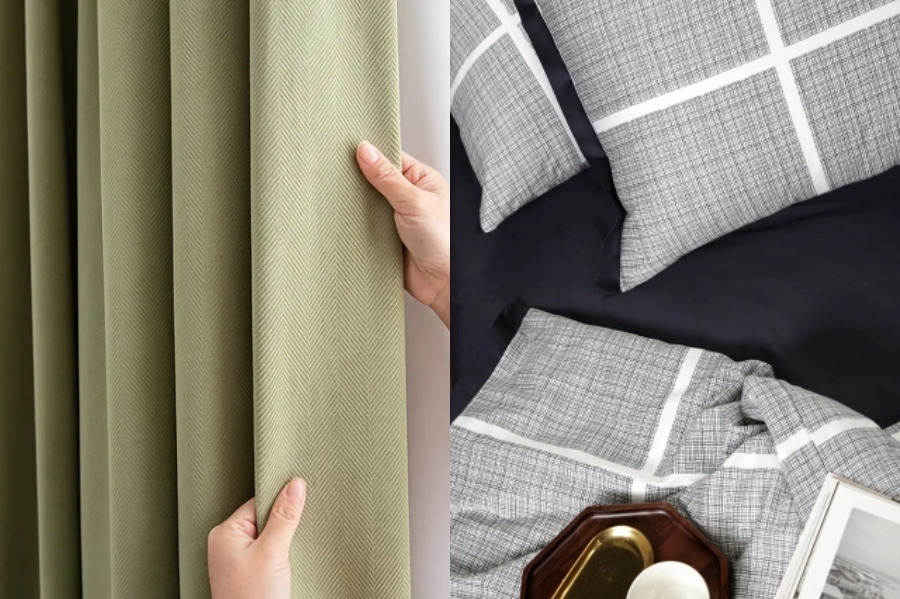
The concept of texture fabric plays a significant role in our daily lives. It refers to the tactile quality of various materials and surfaces that we come into contact with. Texture fabric can greatly influence our experiences and interactions with objects, clothing, furniture, and even the environment around us.
In the realm of fashion, texture fabric plays a crucial role in determining the overall look and feel of garments. It brings depth and visual interest to clothing, making it more visually appealing and engaging. Fabrics with different textures, such as smooth silk, coarse denim, or soft velvet, can create diverse aesthetics and evoke different emotions when worn. Texture fabric also affects the comfort and functionality of clothing, as certain fabrics may feel rough, itchy, or smooth against our skin.
Furthermore, texture fabric is not limited to clothing alone. It extends to various design elements in interior decoration and home furnishings. From the soft plushness of a cozy sofa to the rough texture of a brick wall, texture fabric adds character and dimension to our living spaces. It affects our sense of touch and can create a cozy, inviting atmosphere or a sleek, modern ambiance.
In nature, texture fabric can be observed in the surfaces of plants, fruits, and materials found in our surroundings. The roughness of tree bark, the smoothness of flower petals, or the prickliness of a cactus all contribute to the sensory experience of our environment. Whether we are walking through a forest or exploring a garden, texture fabric adds layers of depth and richness to our perception of the natural world.
In summary, texture fabric is a fundamental aspect of our lives. Its presence can influence our style choices, impact our comfort levels, enhance the aesthetic appeal of our surroundings, and shape our sensory experiences. By paying attention to the texture fabric in our daily lives, we can develop a deeper appreciation for the diverse tactile qualities that surround us.
Texture fabric plays a crucial role in interior design as it is utilized to create various household items such as cushion covers, pillow covers, curtains, and sofa covers. By incorporating texture fabric into these elements, a living space can be transformed into a comfortable, opulent, and contemporary environment. Additionally, the practical benefits of texture fabric, such as its dust-resistant and effortless cleaning properties, make it a preferred option for interior designers when selecting materials for their products.
Furthermore, Texture fabric finds application in event decoration, where it is utilized for creating backdrops and stage decorations. This utilization of the fabric leads to visually appealing and sophisticated outcomes. Additionally, in the automotive industry, Texture fabric is employed to cover seats and enhance the interiors of cars, providing users with a sense of luxury and comfort.
Properly clean and maintain Texture fabric for its longevity and optimal condition.
To preserve the longevity and aesthetic appeal of Textured fabrics, it is crucial to adhere to appropriate cleaning and maintenance practices. When laundering Textured fabrics, begin by using cold or warm water and selecting a gentle wash cycle to prevent any potential damage to the fabric’s structure and pattern. To safeguard the color and material, opt for a mild detergent that does not contain harsh chemicals.
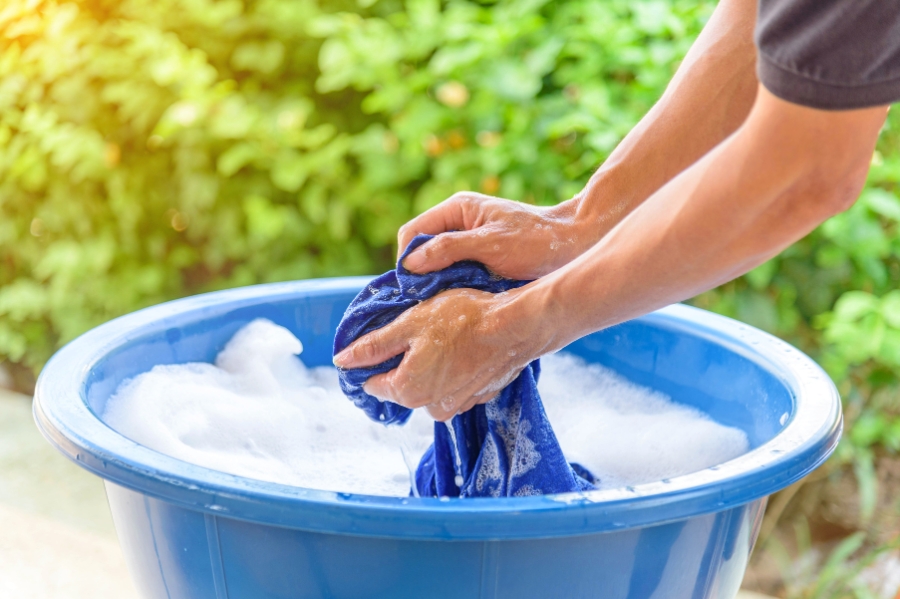
Instructions for Cleaning and Preserving Texture Fabric:
1. Start by reading the care instructions provided by the fabric manufacturer. This will give you specific guidelines for cleaning and preserving the texture fabric.
2. Before cleaning, remove any loose dirt or debris from the fabric by gently brushing or vacuuming it. Use a soft bristle brush or a vacuum cleaner with a brush attachment to avoid damaging the fabric.
3. If there are any visible stains on the texture fabric, it is important to address them promptly. Prepare a mild cleaning solution by mixing a small amount of gentle laundry detergent or upholstery cleaner with warm water. Test this solution on a small, inconspicuous area of the fabric to ensure it does not cause any discoloration or damage.
4. Dampen a clean cloth or sponge with the cleaning solution and gently blot the stained area. Avoid rubbing or scrubbing the fabric vigorously, as this can lead to fraying or distortion of the texture. Instead, work from the outside of the stain towards the center, while applying light pressure and using small, circular motions.
5. Once the stain has been treated, thoroughly rinse the cloth or sponge with clean water and blot the area to remove any remaining cleaning solution. It is crucial to remove all traces of detergent or cleaner to prevent it from drying and leaving a stain or residue on the fabric.
6. After cleaning, allow the texture fabric to air dry completely. Avoid using heat sources such as hair dryers or placing the fabric in direct sunlight, as this can cause shrinkage or fading of the texture.
7. To preserve the texture fabric, it is recommended to keep it away from direct sunlight, as prolonged exposure can lead to fading or deterioration of colors. If possible, use curtains or blinds to minimize the fabric’s exposure to sunlight.
8. Regularly vacuum the texture fabric to remove any dust or dirt particles that may accumulate. Use a brush attachment or a low suction setting to prevent abrasive action on the fabric.
9. In case of spills or accidents, promptly blot the affected area with a clean cloth or paper towel to absorb the liquid. Avoid rubbing the fabric, as this can spread the stain or push it deeper into the texture.
10. Consider using fabric protectors or treatments specifically designed for texture fabrics. These products can provide an additional layer of protection against stains and spills while preserving the fabric’s texture and appearance. Follow the manufacturer’s instructions for application and reapplication intervals.
By following these guidelines, you can successfully clean and preserve your texture fabric, ensuring that it retains its beauty and durability for years to come.
For fabrics with delicate textures such as velvet or silk, it is recommended to either hand wash them or take them to a professional dry cleaning service. This is to ensure that the fabric maintains its shape and color without any damage. It is important to avoid wringing or twisting the fabric after washing, as this can cause it to lose its original form. Instead, allow the fabric to dry naturally or use a soft towel to gently absorb any excess water.
When drying the fabric, it is important to avoid exposing it directly to sunlight as this can cause the fabric to fade. If ironing is necessary, it is advisable to choose a gentle ironing mode and to iron the fabric on the reverse side in order to protect its surface and any patterns. When storing the Texture fabric, it is best to hang it in a dry and cool area, away from any moisture, in order to prevent the formation of mold and the development of unpleasant odors.
In order to ensure the longevity and aesthetic appeal of Texture fabrics, it is crucial to incorporate regular cleaning and appropriate maintenance practices. By doing so, the fabric will stay in pristine condition, preserving its new and beautiful appearance.
Epilogue
Texture fabric is a highly versatile and visually appealing material that offers numerous benefits and applications in today’s modern world. It is known for its unique and rich characteristics, which enhance its aesthetic value. By reading this article, it is hoped that you have gained a broader understanding of texture fabric and its various uses. Don’t forget to stay updated with the Fashion Bandung news section to explore further exciting insights into the world of fashion.
Fashion Bandung offers a wide range of fashionable clothing specifically designed for men. Our collection includes trendy and stylish garments that cater to the ever-evolving fashion needs of men. Whether you’re looking for formal wear or casual outfits, we have it all. Our extensive selection features various cuts, colors, and fabrics to suit different preferences and occasions. From tailored suits and crisp shirts to comfortable jeans and stylish jackets, we provide a diverse range of options to help men express their personal style. With a focus on quality and durability, our fashion choices are designed to not only make you look good but also ensure long-lasting wear. At Fashion Bandung, we believe that fashion plays a crucial role in boosting confidence and enhancing overall well-being. That is why we strive to bring you the latest trends and designs that align with both your fashion sensibilities and your desire for a healthier, more fulfilling life.
See more:

